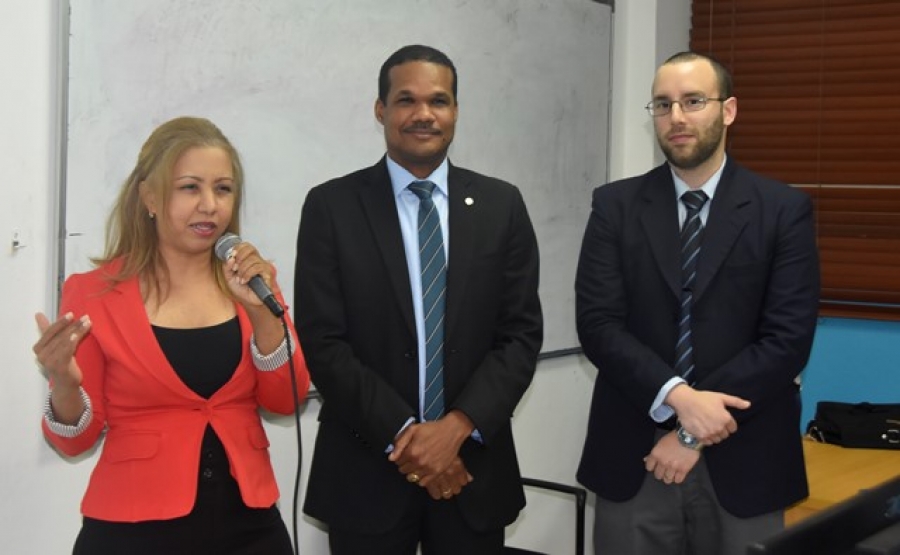Prof. Christian López works on system to detect car accidents from traffic cameras using machine learning and computer vision
Christian López would never say anything to disparage his native Dominican Republic (DR), but he’s quick to offer that driving conditions in the DR require a heightened sense of alertness.
“While the DR has some of the most wonderful beaches in the world, there are areas that need improvement, just like any other country,” says López, assistant professor of computer science. “The traffic situation in DR is very similar to a lot of developing countries that have experienced exponential growth of population in the last few decades, but urban planning and infrastructure systems have not managed to keep up with the growth. These are some of the reasons for the traffic situation in DR.”

(L-R) Raysa Vasquez, professor of computer science at Universidad Autónoma de Santo Domingo, Radhamés Silverio, dean, Faculty of Sciences at Universidad Autónoma de Santo Domingo, and Christian Lopez, assistant professor of computer science at Lafayette College.
To help improve traffic safety in the Dominican Republic, he is working with Universidad Autónoma de Santo Domingo (UASD) to create a system that would automatically detect car accidents from traffic cameras using machine learning and computer vision. He took time from his busy schedule to discuss the project. (For more about this project you can visit his website: sites.lafayette.edu/lopezbec/projects.)
What inspired your traffic safety research?
“It came about by the fact that the DR has some of the highest numbers of road fatalities in Latin America, and the new National Emergency Care and Security System, which has resulted in video camera installations in key cities.”
How does the system work?
“The project has as objective to develop a real-time accident detection system based on machine learning algorithms. The system is not deployed yet; we are just now working on the machine learning model to detect accidents. Traffic accidents and anomaly detection is a challenging problem in the computer vision community, and even more in the DR where traffic patterns are very different from those in developed countries.”
How will your system reduce injuries and save lives?
“If we are able to detect accidents in real time, we can reduce the response time, and every minute reduction to the response time of a trauma incident increases the probability of survival of the victim. The systems could also help mitigate secondary effects of traffic accidents in urban areas (e.g., traffic jams, other accidents), by allowing authorities to deploy emergency personnel more effectively and faster.”
Will your system be available in other countries eventually?
“Yes, the computer vision and machine learning community is a very open community. Our system should work well in other developing countries with similar traffic patterns. For example, I am collaborating with some of the organizing committee members of the NVIDIA AI City Challenge, which was created to improve traffic safety and public transportation systems, and Iowa State University to acquire and store traffic accident videos.”
Can you describe what it’s like to drive in the DR?
“I always like to believe that I am a ‘good’ driver since I learned to drive in the DR. This is because in the DR you need to drive paying attention to your surroundings and use all of the mirrors (no time for distraction while driving). You need to be aware of what all the cars next to you are doing and/or are planning to do, so not only focus on the one in front of you. It all makes for stressful driving conditions, unfortunately.”
